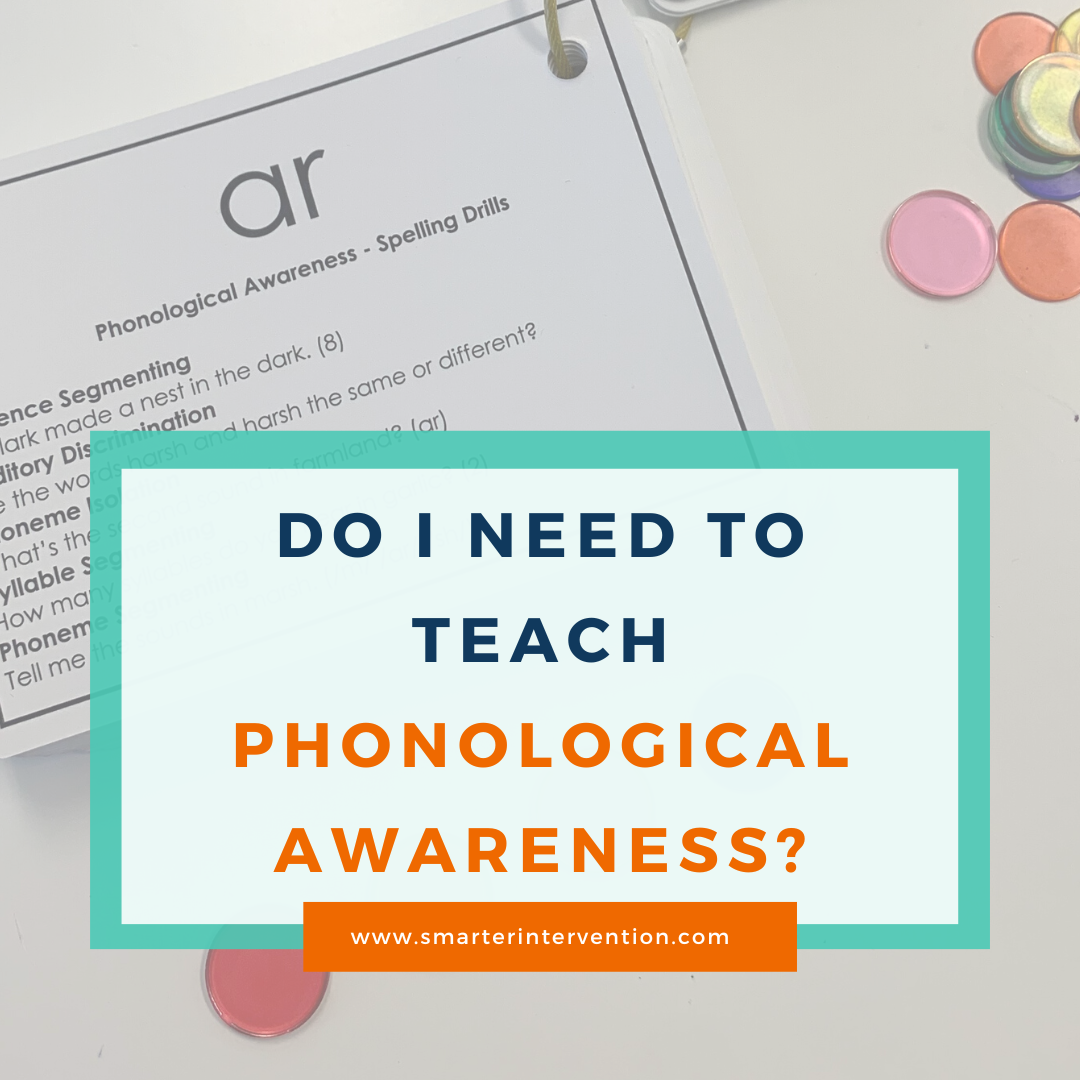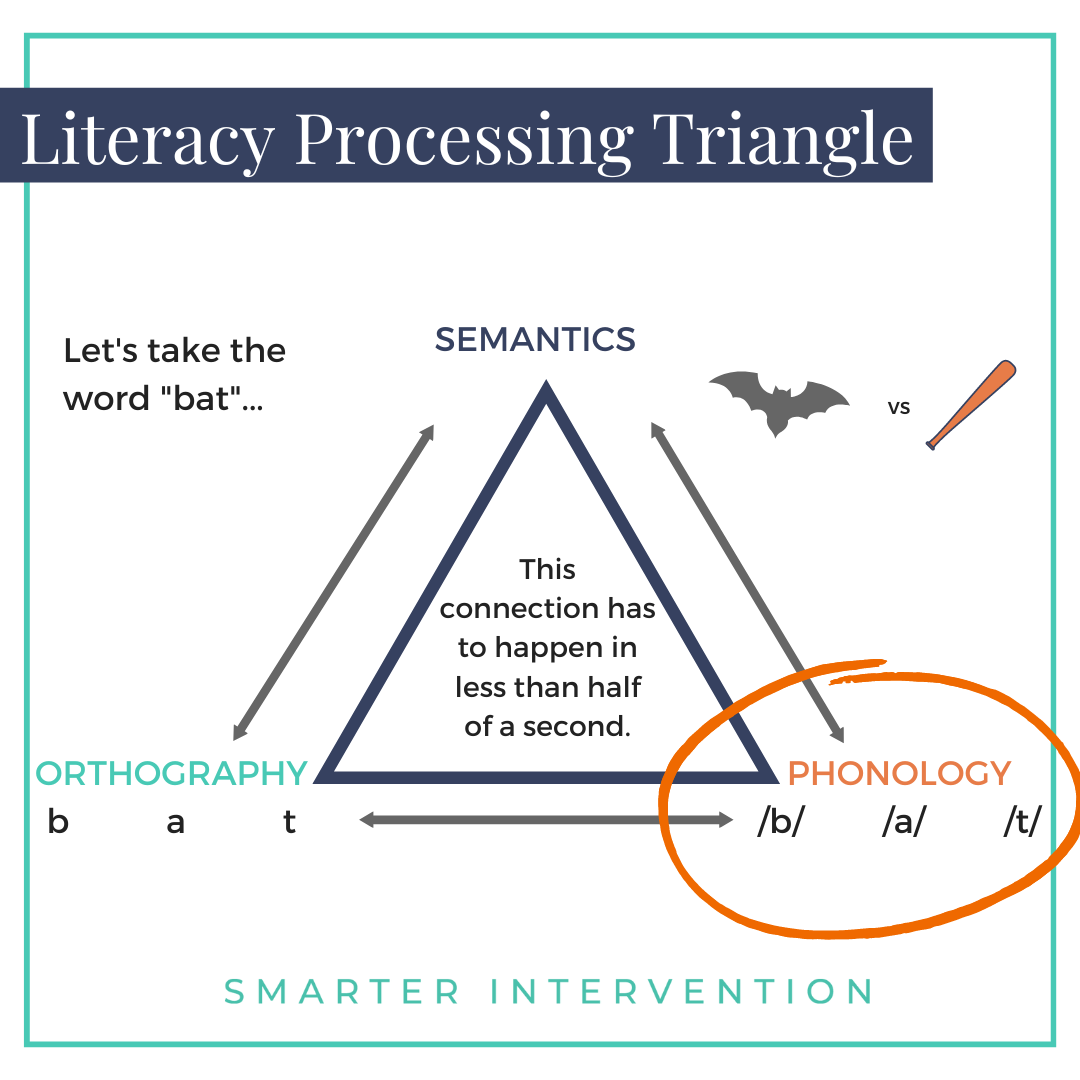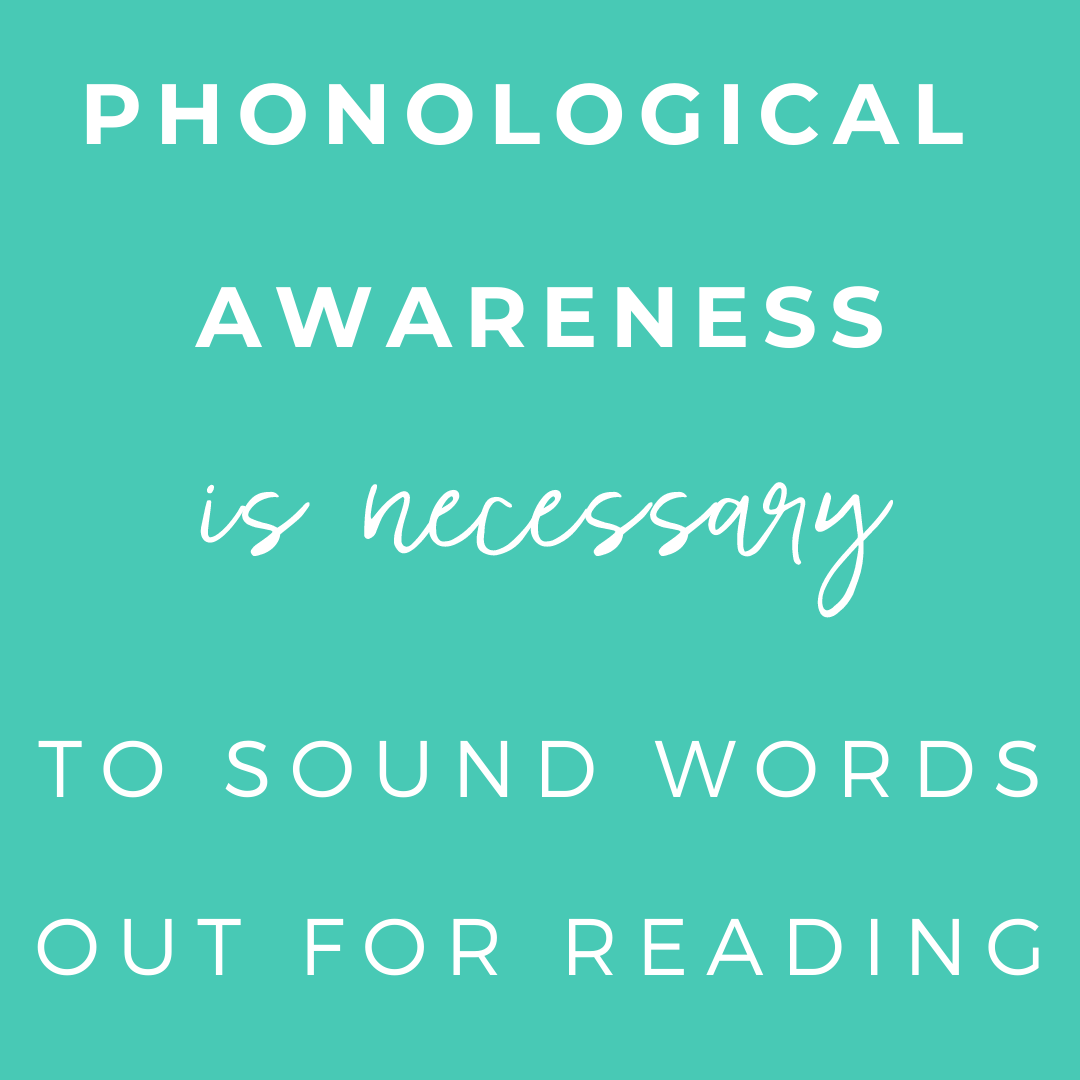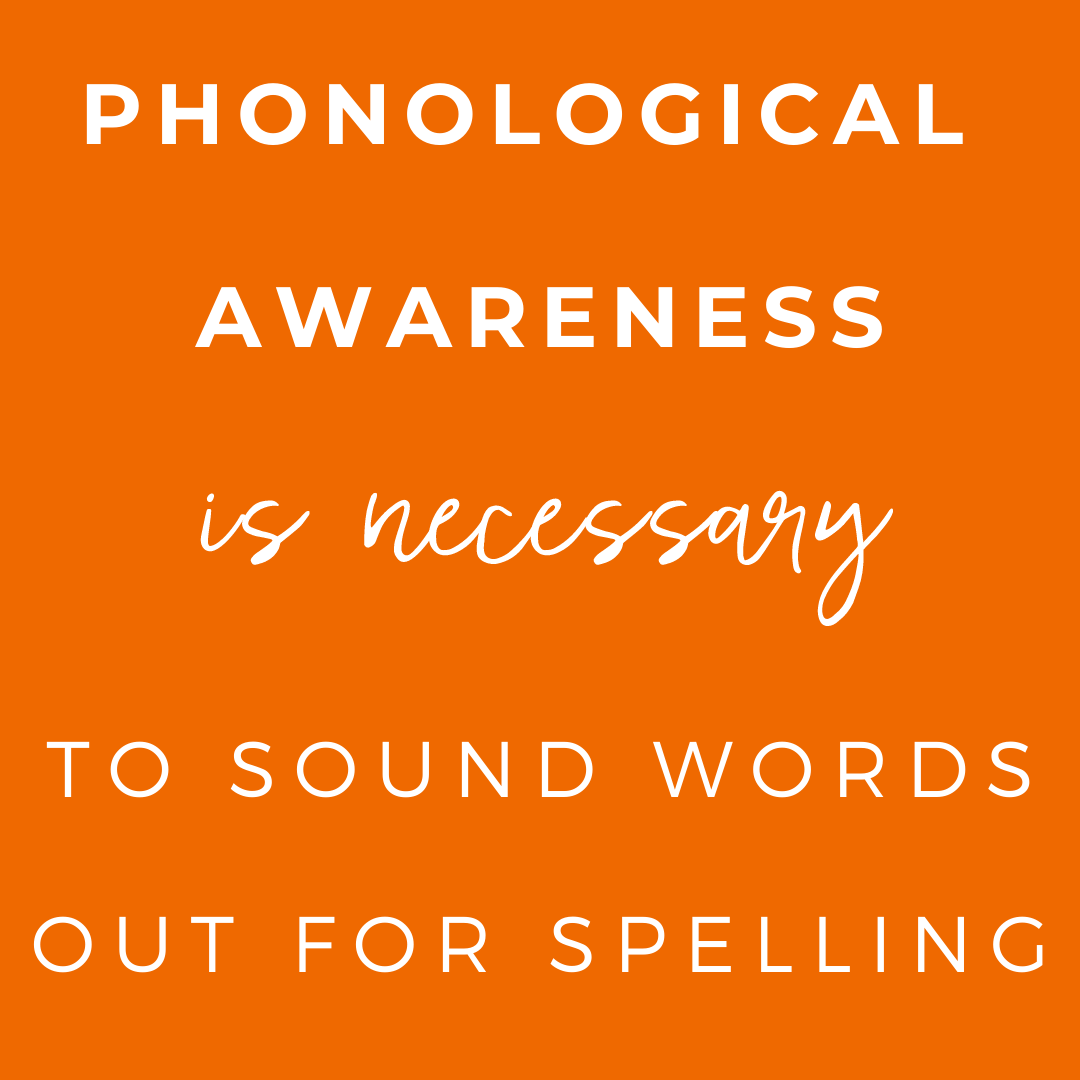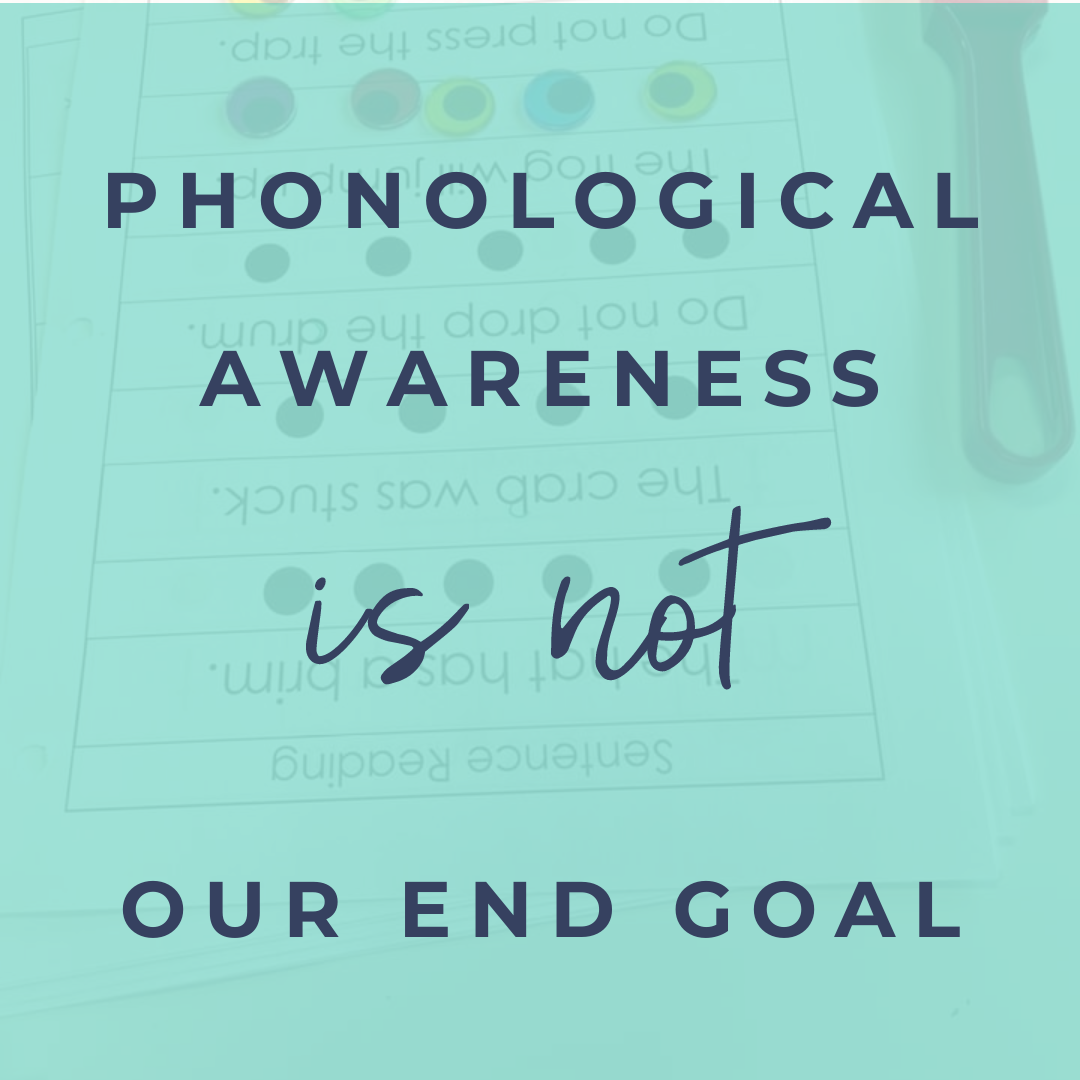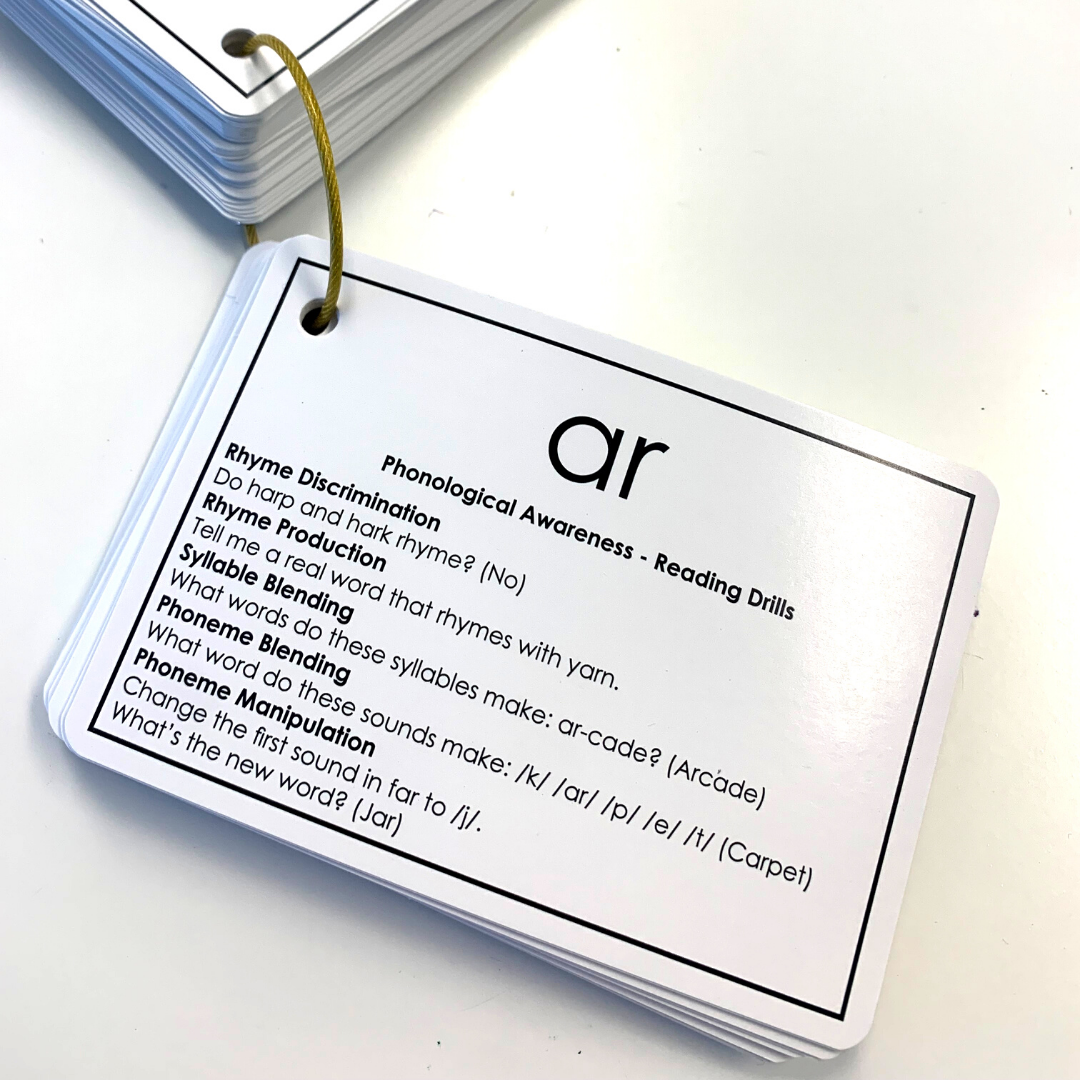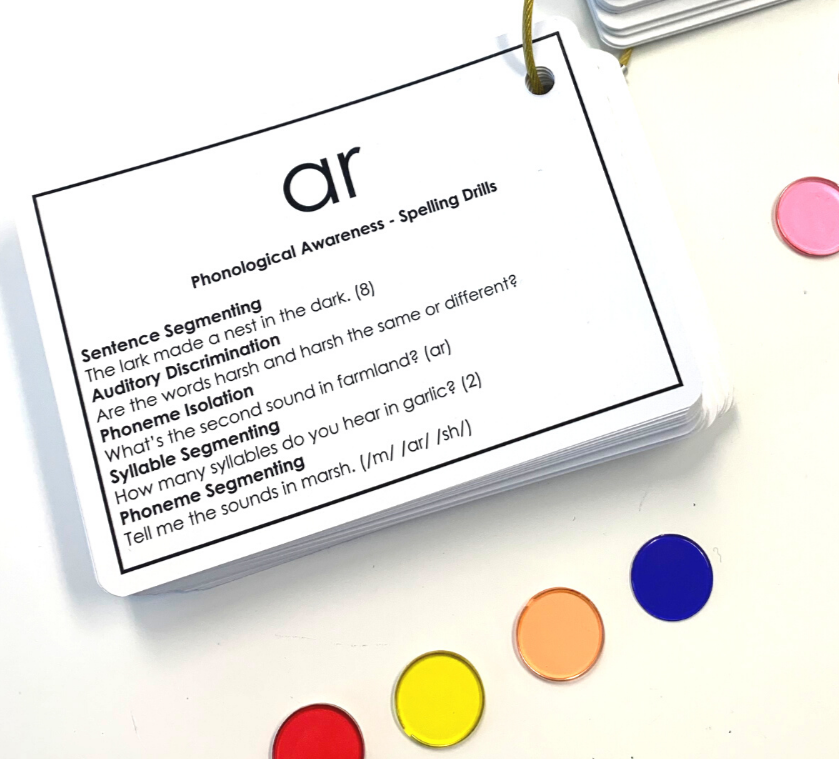Do I Need to Teach Phonological Awareness Skills?
To teach, or not to teach…this is the question (especially because research seems to be ever-changing in this area)!!
There are actually many questions about teaching phonological awareness.
Some of the most frequently asked questions we get are…
Do I need to teach phonological awareness skills?
What if I teach older students? Isn't this only necessary for younger students?
Should I focus on specific skills?
How do I incorporate these skills without it just feeling like a disjointed drill in my lessons?
And last but certainly not least…
What exactly is phonological awareness?
Fabulous questions if we do say so ourselves.
We're going to start with the last one -
What exactly is phonological awareness?
Phonological awareness is...
…the ability to recognize (or be aware of) the sound structure of our language.
This allows us to "sound words out" for reading and spelling. It also allows us to substitute and swap sounds around within words which builds fluency and automaticity.
Phonological awareness incorporates an understanding of the sound structure at the sound, syllable, and word levels. So, for example, if we hear the sounds /b/, /a/, and /t/ we could blend those sounds into "bat." If we hear the syllables /bat/ + /er/, we could blend those syllables into batter. If we hear the words /the/ /batter/ /was/ /up/ /on/ /base/, we could blend the words into the sentence "The batter was up on base."
Phonological awareness skills also include hearing the difference between sounds, isolating sounds, and manipulating sounds within our words. In essence, phonological awareness is the knowledge that words aren't solid bricks - they can be broken down into smaller parts.
So next question…
Do I need to teach phonological awareness skills?
The short answer is yes.
We understand that research has continued to throw us for loops in this area but if you want students to understand how to effectively decode (sound words out for reading) and/or encode (sound words out for spelling), they need to have phonological awareness ability.
The longer answer (if you're into the brain science aspect)…
Phonological awareness skills and activities help to develop necessary neural processes in the brain that do much more than just help us sound out words.
If you haven't read our blog, "Reading is Hard: Understanding the Bases of Literacy" yet, you can find it >>here<<.
In this blog, we discuss the cognitive processes that are necessary for reading and writing. In short, there is no single area in our brain responsible for these tasks. Instead, a number of neural processors work together. One of the key processors is the phonology processor which is responsible for recognizing and interpreting the sound structure of our language. It includes neural structures like Broca's Area (responsible for speech) and Heschel's Gyrus (responsible for auditory processing).
All this to say, phonological awareness is incredibly important for speech production, auditory processing, reading, and spelling so it's a very useful skill to teach! This is especially true for our students with speech difficulty and reading/spelling difficulties.
Which brings up our next question,
What if I teach older students? Isn't this only necessary for younger students?
The short answer…
…phonological awareness skills are helpful for students of all ages.
The longer answer…
Phonological awareness activities should be considered priming activities. Phonological awareness is not the end goal but it helps to support the end goal.
Quick example, I went to my son's soccer practice the other day and the new coach jumped straight into a goal-shooting activity. No warm-up, no jumping jacks, nothing - just come line up over here and kick the ball into the net. Obviously, the end goal is kicking the ball into the net but we do want to prime the body before jumping straight in.
The same thing applies here -
phonological awareness activities should be a quick warm-up to remind students of the neural process involved in reading or spelling.
It should take 5 minutes or so and this quick drill is helpful whether your students are in kindergarten or middle school. We would not recommend this to be the majority of your lesson with students, just like we wouldn't recommend doing jumping jacks for the majority of soccer practice.
Should I focus on specific PA skills?
There are several phonological awareness skills we can target. So a good question to ask, is which skills should I target?
The subskills that fall under the “phonological awareness umbrella” include…
Rhyming
You may have heard that rhyming isn't worth your time (because it doesn't directly translate to reading in the same way blending does). We still find it helpful to teach. We do it to build automaticity & fluency. Click here to learn about how we teach rhyming at different ages and why it matters in the scope of our instruction.
Syllable Blending
Syllable blending is the ability to take individual syllables and string them together to make words. This is important for young children and for older students who struggle with short-term working memory. Click here to learn about how we teach syllable blending.
Phoneme Blending
Phoneme blending is a critical skill in sounding out words. Click here to learn about how we teach phoneme blending.
Phoneme Manipulation
Phoneme manipulation allows students to swap out sounds when they realize they've errored when reading or spelling words, which is why practice on this higher-level skill is important. Click here to learn about how we teach phoneme manipulation.
Auditory Discrimination
Some students have a hard time differentiating between similar sounds, this can impact speech production, reading, and spelling! Click here to learn about how and why we teach auditory discrimination.
Sound Isolation
Being able to isolate sounds is especially helpful when students are trying to error-correct words in their reading and spelling. Click here to learn about how and why we teach sound isolation.
Sentence Segmenting
Being able to break sentences into individual words is helpful when writing, but it also supports higher-level comprehension skills. Click here to learn more.
Syllable Segmenting
Spelling can feel like an insurmountable challenge for many students. Syllable segmenting helps make this task approachable. Click here to learn about how and why we teach syllable segmenting.
Phoneme Segmenting
Phoneme segmenting allows students to recognize how many sounds are in their words. This is essential to spelling success. Click here to learn about how and why we teach phoneme segmenting.
Essentially, you want to focus on skills that are creating difficulty in a specific outcome.
If students are struggling with automaticity, practice phoneme manipulation. If students are struggling to spell words, practice syllable and sound segmenting. You can also look at the areas that are weak for students and focus on those specific areas using a tool like >>this<<.
Okay, so that brings up the next question...
How Do I Teach This Without It Feeling Like a Disjointed Drill?
Okay, so perhaps if you have been told you need to incorporate phonological awareness, you were given some quick drills to incorporate into your lessons. Amazing, but…
This can feel disjointed if it has nothing to do with anything else in your lesson. It's just one more thing to check off the checklist, right?
Two Strategies to Make Your Phonological Awareness Instruction Feel Cohesive:
1 - Align your phonological awareness activities with your phonics instruction! This creates cohesion in your lessons AND it helps students make the connection of WHY they're doing these skills - they're warming up their neural processors for reading and spelling.
You can grab these PA drill cards >>here.<<
2 - Just incorporate your PA instruction directly into your reading and spelling instruction. For example, before a student spells a word, ask them "How many syllables? How many sounds? Which sounds are vowel sounds? What if we need to change/swap out a sound because we missed one?"
So there you have it…answers to the most common questions we receive related to phonological awareness.
If you have additional questions drop them in the comments below.
If you're looking for some quick activities to support phonological awareness, grab them in our 5 Core Components of Literacy SOR-aligned Activity Library. Inside you will find hundreds of SOR-aligned activities to support all of the core-literacy components. Use the button below to learn more and get 50% off your first month!

